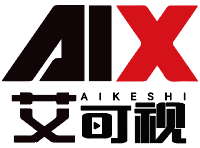In today’s busy office world, nobody has time for long, dull meetings that go nowhere. That’s why people are turning to conference interactive boards. These smart screens do more than show slides; they let everyone jump in at the same time, no matter where they are. Whether it’s a brainstorming session for a new product launch or a quarterly review with remote team members, these boards have become the backbone of dynamic, productive gatherings, transforming the way teams collaborate and make decisions.
Redefining Meeting Dynamics: From Passive Listening to Active Participation
Since these boards showed up, meeting rooms feel different. Each one is a giant touch tablet, so presenters can pinch, drag, or doodle right on the display. Imagine a marketing team brainstorming campaign ideas: the lead presenter pulls up a blank canvas, and instantly, a designer adds a quick sketch of a logo, a copywriter jots down tagline ideas, and a social media manager drags in trending hashtags—all directly on the board. Teams use them to map out projects with timelines that can be adjusted with a swipe, pull up sales charts that highlight key trends with a tap, or run quick training drills where participants annotate process flows in real time. This shift from one-way presentations to collective action keeps the whole group alert instead of staring at one speaker, turning passive attendees into active contributors.
Seamless Integration: Working in Harmony with Existing Tools
Another big win is how well these boards play nice with the software most companies already use. One tap can pull up a shared Google Doc where everyone edits meeting notes simultaneously, start a Teams video call that displays remote colleagues’ faces alongside the board’s content, or flip through a PowerPoint while adding live comments in the margins. There’s no more fiddling with tangled wires under the table or scrambling to find the right adapter for a laptop—connections happen wirelessly, and compatibility issues are virtually nonexistent. That easy-to-set-up tech cuts meeting prep time significantly; what used to take 10 minutes of plugging in devices now takes 30 seconds, leaving everyone talking about goals and solutions instead of troubleshooting technical glitches.
Bridging the Gap: Uniting In-Person and Remote Teams
Plus, modern smart boards really do meet the mix of demands today´s teams throw at them. With remote work almost routine, these screens pull together in-person and online guests in ways that traditional meeting setups can’t match. For example, during a budget planning meeting, an in-office team member can draw a proposed budget allocation on the board, while a remote manager on the other side of the country uses their tablet to circle a line item for discussion—both actions appear instantly on the shared screen. Everyone can vote on options using digital polling tools built into the board, sketch out alternative ideas in different colors, or chime in with voice notes that get saved alongside the meeting content. That kind of equal access makes talk faster, ensures no one’s input gets lost in translation, and keeps people from tuning out because they feel disconnected from the conversation.
A Long-Term Shift: Elevating Meeting Culture for Good
As firms push harder for high energy and open ideas, the buzz around smart boards keeps growing and shows no sign of slowing down. Teams that plug the gear in typically log more focused hours—studies suggest meetings with interactive elements are 30% more efficient than traditional ones—and spark better mood and trust among colleagues. When everyone sees their contributions valued on the shared screen, collaboration feels more meaningful, and conflicts get resolved faster through visual problem-solving. In the end, these boards aren’t a flash-in-the-pan gadget; they mark a clear change in how workrooms run. Give the tech a try, and meetings peak in fun and value, turning once-dreaded gatherings into opportunities to innovate, align, and help the whole company move forward with purpose.


